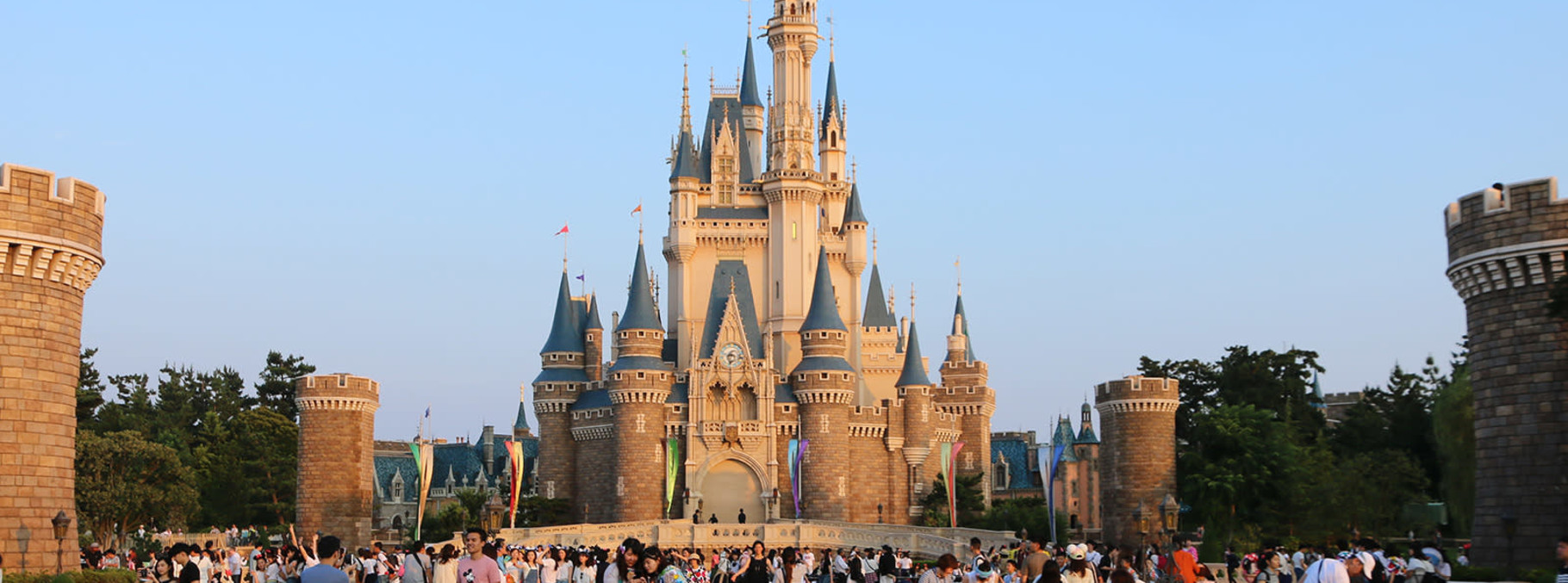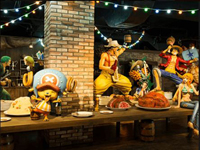Aoi Matsuri
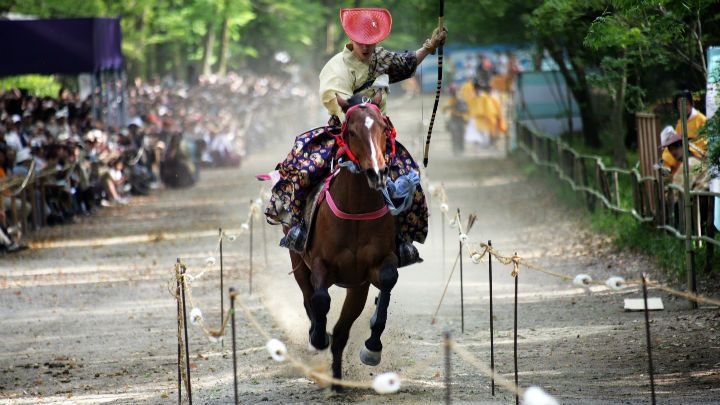
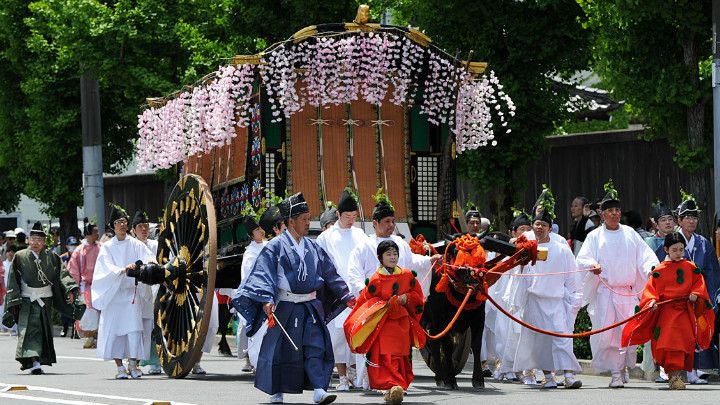
(Source: 「鉄道で行く旅」管理人のWeblog)
Roto-no-gi (procession)
The parade departs from the Kyoto Imperial Palace where the past Emperors resided until 1869, works its way towards the Shimogamo shrine and finally the Kamigamo shrine. The highlight of the festival is “Roto-no-gi” (procession). The parade consists of two processions, the main procession and the Saiodai. The total length of the parade of 500 people reaches as long as 1 kilometer! They walk for about 8 km to the goal i.e., Kamigamo shrine. The Saiodai is the procession of beautiful ladies. The most gorgeous portable shrine carries the heroine, Saiodai, the lady offered by the Imperial Family to serve God. Today, an unwed woman in Kyoto is chosen to play the role.
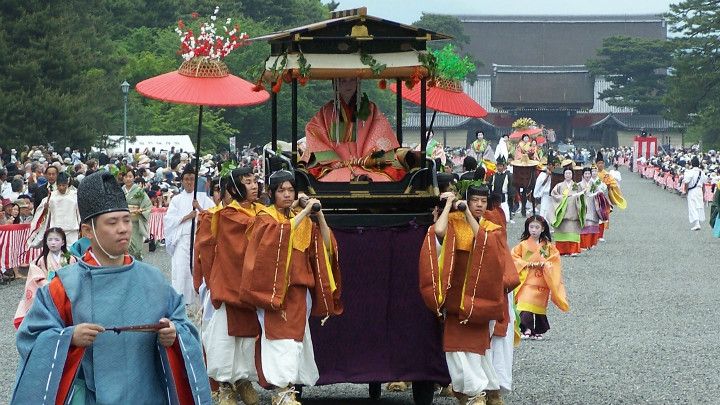
(Source: 内科医Randykumaのココロの旅・・)
Shato-no-gi (ceremony at Shimogamo shrine)
When the parade arrive at Shimogamo Shrine, a ceremony called Shato-no-gi is held. This event is when the messenger of the Emperor offers gifts to the God. It is the scene of communication between the God and humans that has been seen every year on May 15 for 1500 years. This is followed by presenting sacred horses of a shrine, and the traditional ceremonial dance called Azuma-asobi before the ceremony ends.
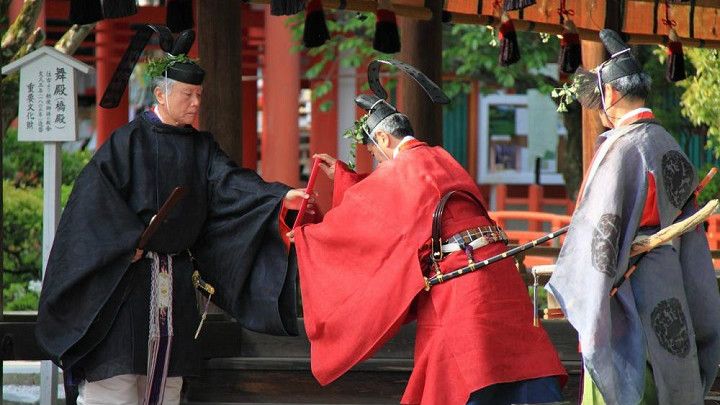
(Source: まさとの写真館)
Arrival at Kamigamo Shrine
The parade restarts after Shato-no-gi. It finally reaches the goal i.e., Kamigamo shrine while conducting Roto-no-gi on the way. This is followed by another Shato-no-gi at Kamigamo shrine before the parade is disbanded.
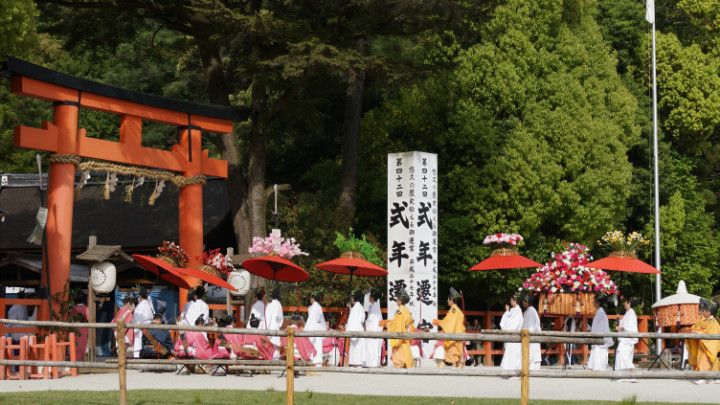
(Source: みどりのゆめ)
Yabusame-shinji (horseback archery)
Aoi Matsuri has many pre-festival events called “zengi” ahead of the main event on May 15. Especially, Yabusame-shinji (horseback archery) held in Shimogamo Shrine attracts many visitors every year. It is a sacred ritual to pray for the safety of the procession and purify the route. The archer in a noble-style, official costume releases the arrows toward the targets from a galloping horse. The enthusiastic cheers and applause are heard from the spectators when the arrow hits and breaks the mark.
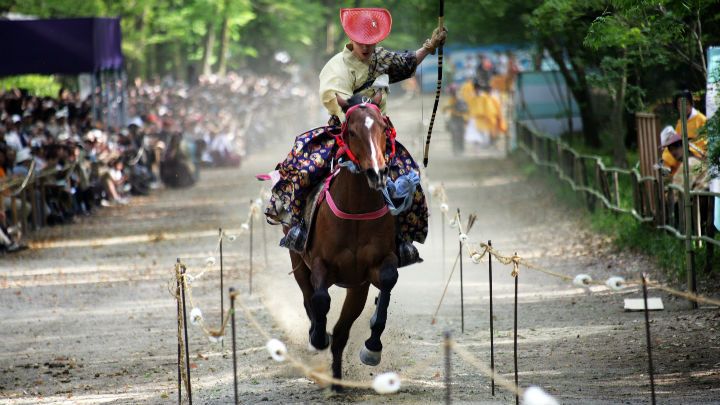
(Source: pixta)
Saiodai Purification Ritual
Saiodai Purification Ritual is held on May 4. Saiodai and 40 servants who participate in the procession soak their hands in water and purify themselves. Shimogamo Shrine and Kamigamo Shrine take turns to conduct this event every year.
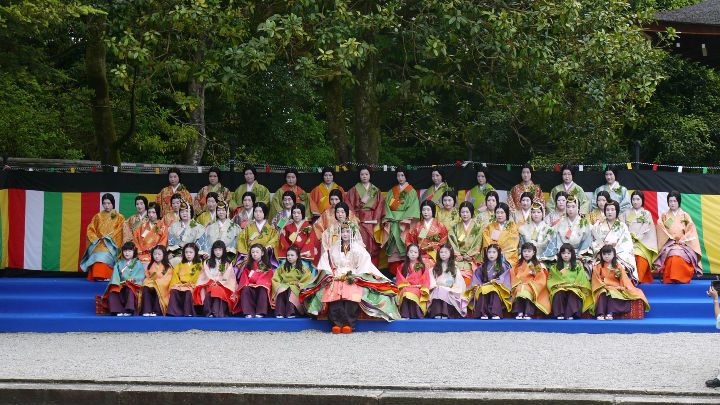
(Source: Wikimedia Commons)

(Source: 「鉄道で行く旅」管理人のWeblog)
Roto-no-gi (procession)
The parade departs from the Kyoto Imperial Palace where the past Emperors resided until 1869, works its way towards the Shimogamo shrine and finally the Kamigamo shrine. The highlight of the festival is “Roto-no-gi” (procession). The parade consists of two processions, the main procession and the Saiodai. The total length of the parade of 500 people reaches as long as 1 kilometer! They walk for about 8 km to the goal i.e., Kamigamo shrine. The Saiodai is the procession of beautiful ladies. The most gorgeous portable shrine carries the heroine, Saiodai, the lady offered by the Imperial Family to serve God. Today, an unwed woman in Kyoto is chosen to play the role.

(Source: 内科医Randykumaのココロの旅・・)
Shato-no-gi (ceremony at Shimogamo shrine)
When the parade arrive at Shimogamo Shrine, a ceremony called Shato-no-gi is held. This event is when the messenger of the Emperor offers gifts to the God. It is the scene of communication between the God and humans that has been seen every year on May 15 for 1500 years. This is followed by presenting sacred horses of a shrine, and the traditional ceremonial dance called Azuma-asobi before the ceremony ends.

(Source: まさとの写真館)
Arrival at Kamigamo Shrine
The parade restarts after Shato-no-gi. It finally reaches the goal i.e., Kamigamo shrine while conducting Roto-no-gi on the way. This is followed by another Shato-no-gi at Kamigamo shrine before the parade is disbanded.

(Source: みどりのゆめ)
Yabusame-shinji (horseback archery)
Aoi Matsuri has many pre-festival events called “zengi” ahead of the main event on May 15. Especially, Yabusame-shinji (horseback archery) held in Shimogamo Shrine attracts many visitors every year. It is a sacred ritual to pray for the safety of the procession and purify the route. The archer in a noble-style, official costume releases the arrows toward the targets from a galloping horse. The enthusiastic cheers and applause are heard from the spectators when the arrow hits and breaks the mark.

(Source: pixta)
Saiodai Purification Ritual
Saiodai Purification Ritual is held on May 4. Saiodai and 40 servants who participate in the procession soak their hands in water and purify themselves. Shimogamo Shrine and Kamigamo Shrine take turns to conduct this event every year.

(Source: Wikimedia Commons)




